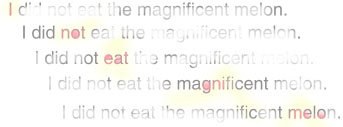

 |
Greg Kochanski |  |
The science of acoustics tells us that the sounds of speech are formed by the shape and movements of the entire vocal tract. However, it is very difficult to observe what is going on in the lower half of the vocal tract, because it is inaccessible. In the mid 20th century, a certain amount was learned from X-rays (usually of static, artificially prolonged vowels or consonants), but X-ray techniques are now no longer used much because of more stringent radiological safety rules.
Almost all investigations of the movements of the speech articulators have focussed on the more easily observed lips, tongue, and jaw. In recent years, developments in Magnetic Resonance Imaging (MRI) have made it possible to look at the vocal tract in a safe, unintrusive way, to give much clearer pictures than was possible using X-rays. Initial studies, based on still images, have been superceded by MRI "movies": sequences of snapshot images, obtained at a rate of 4-8 images per second. This is not as fast as movies in the cinema, and it is not fast enough to catch some of the very rapid tongue movements in speech, but it is adequate for watching the slower articulators. In a recent project, we looked at how the larynx (voice-box) moves around in order to make the pitch of the voice rise and fall.
We use a "stroboscopic" method, in which the same utterance is repeated over and over (ten times). A sequence of image fragments are collected during each utterance, with different fragments obtained on each repetition. The collection of fragments obtained during the ten repetitions are then reassembled into a kind of animation. The movies obtained in this way can be more detailed, and have a higher frame rate, but there are limitations: the movie is made from bits and pieces of different repetitions.
We study and model the movements of the major articulator of the lower vocal tract: the tongue root. Because of its inaccessible location, this articulator is particularly difficult to study, yet very important to speech. The tongue root can be pushed forwards (advanced) or pulled backwards (retracted). Whether or not it is advanced is thought by many phonologists to be important in making a difference between certain sounds: the difference between the vowels of "it" and "eat", for example, or "look" vs. "loot". But there is very little firm data on this (none for British English pronunciation), and one solid scientific paper based on X-ray tracings of tongue-shapes for American English vowels casts doubt that the tongue root is independently controlled. Our major goal is to sort out this issue of how the tongue root is controlled and what strategies are used to move it during speech.
The detailed proposal, a nontechnical summary, and a summary version of the final report are attached. This project was accepted and funded by the UK's Economics and Social Research Council as research grant RES-000-23-1094, during 2005-2008.
| [ Papers | kochanski.org | Phonetics Lab | Oxford ] | Last Modified Tue Aug 12 10:43:12 2008 | Greg Kochanski: [ Mail | Home ] |